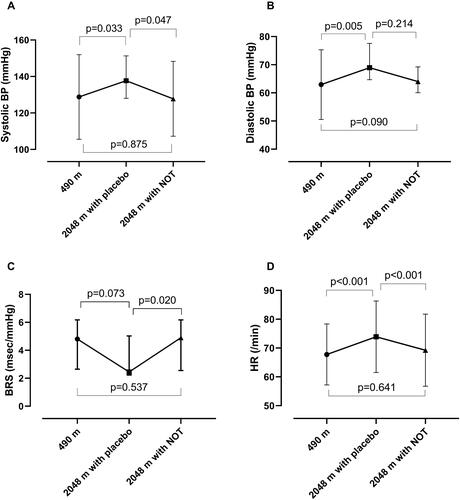Figures & data
Table 1 Patient Characteristics in the per Protocol Population
Figure 1 Simplified patient flow chart. SeeCitation26 for four arm allocation of the intention-to-treat-analysis in the main trial. Severe hypoxemia was defined as an arterial oxygenation measured by finger oximetry <75% for >30 min.

Table 2 Effect of Altitude and Treatment Effect of NOT
Figure 2 Systolic (A) and diastolic (B) blood pressure (BP), baroreflex sensitivity (BRS; (C) and heart rate (HR; (D) compared between the three assessments (median and IQR) – room air at low altitude (490 m), placebo (room air) at altitude (2048 m) and nocturnal oxygen therapy (NOT) at altitude (2048 m).

